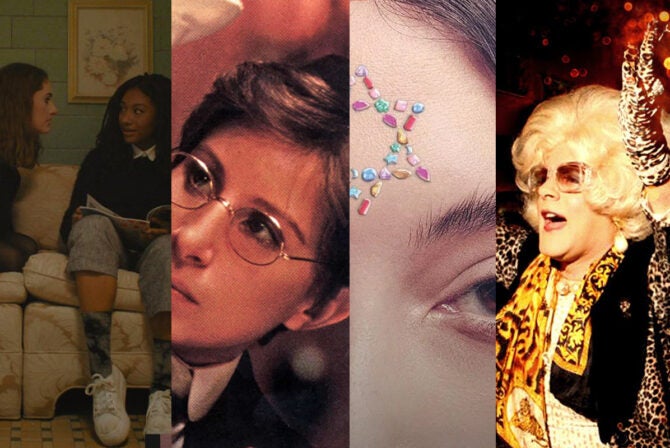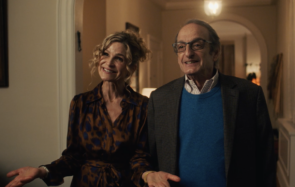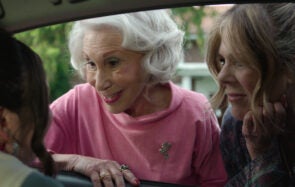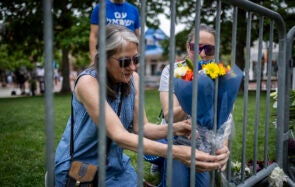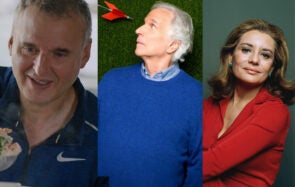Shortly after the election last November, a friend sent me a real estate listing. It was for a private island in Scotland, including several buildings, its own postage stamp and infrastructure. I started breaking down costs, much to my husband’s bewilderment. He didn’t understand. But when I talked to my mother about it, she understood immediately. “We’ll know when it’s time to go,” she said. My husband thought we were being paranoid. I said we were being Jewish.
The fact is that it isn’t in my husband’s belief system to think that his government would ever turn on him. He simply cannot imagine that such a thing could happen. I can.
I knew long ago that there were some gaps in our perceptions of the world. He did not know about Dr. Brown’s soda, for one thing, or how to wear a yarmulke. He’d never seen a Woody Allen movie or lit a menorah. His relatives had largely fled the Potato Famine. He’s taught me about kneelers, having nuns in your family and growing up Boston Irish.
I wasn’t sure what we were going to learn about each other on our recent trip to Amsterdam. To me, going to Amsterdam meant art, the canals and probably some good beer, but mostly it meant finally getting to see the secret annex. I read Anne Frank’s account of living in hiding when I was in elementary school; it was a source of both hero worship and nightmares for me. I was excited about getting to experience the setting of her story firsthand, but my excitement contained both reverence and nausea. This was where she wrote. This was where she hid to save herself.
Would my husband, who was not Jewish, be able to understand all of this?
We waited in line, in the sun, for hours to gain admission. “You can go,” I kept telling him. “It’s hot, and there’s nowhere to sit. I don’t mind.” He said no. We took turns standing or sitting on the ground, talking with the German woman behind us who was waiting with her dog and eavesdropping on the loud group of Americans in front of us.
They kept exclaiming loudly about how seeing the house was at the top of their to-do list in Amsterdam “because it’s like the biggest attraction.” We cringed. “I was like, OMG, we totes have to go and get the T-shirt or whatever,” I whispered to him. He rolled his eyes. Solidarity.
He took my hand as we crossed into the museum, making our way through the lower levels, the offices and store rooms that buffered the Franks and the other residents of the annex from discovery. The further up we went, the harder it became to swallow the lump in my throat.
They were here, I thought. Those pictures on the wall are the ones Anne wrote about in her diary. This is where they ate. This is the textbook they used for lessons to occupy their time—to maintain some semblance of normalcy in a world that was no longer anything like normal.
This has always been part of what I’ve found so hard to explain to my husband: Their world was normal and then it wasn’t. Yes, things got worse and worse, until they were so bad that they fled for their lives. But it was incremental—a pot with the water gradually heating to boiling. This is what I mean when I ask, “How will we know?” I mean, how will we be better-equipped to recognize that the temperature is rising too high?
We were both silent as we left the museum, passing all the postcards bearing the images of the photos we’d encountered throughout the tour. It felt somehow indecent to buy them, although I hesitated over the copy of the picture of the sole survivor, Otto Frank, standing in the annex in 1960.
How do you bear that? How do you endure being in the place where your family lived, knowing you couldn’t save them? “I love this picture,” I told my husband. “But I’m not buying it.” He nodded, understanding what I meant: We have children.
We went to a café for a drink, both deep in our own thoughts while we waited for our order. “I wasn’t sure you’d understand,” I admitted.
“I know,” he said.
“I didn’t like feeling that—but you’re right, I don’t have that context.”
“You don’t,” I said. “But I saw you in there. You felt what I did.”
“Yes, of course,” he said. “That doesn’t depend on context.”
We turned our attention to what was in front of us then: the drinks, watching people walk along the canal, and I realized that I’d needed his explanation as much as he’d needed mine. Our context is different, but we are not.
This article originally appeared on www.InterfaithFamily.com and is reprinted with permission. For more resources designed for interfaith families exploring Jewish life, visit www.InterfaithFamily.com.


